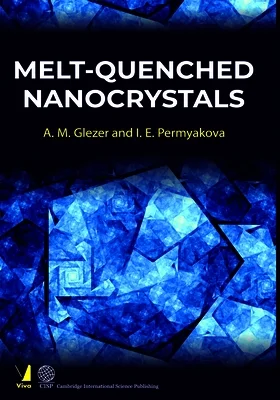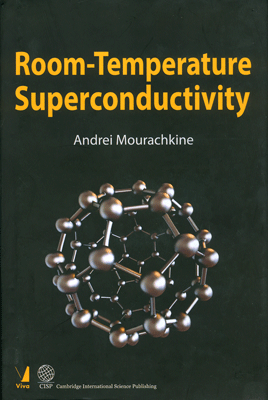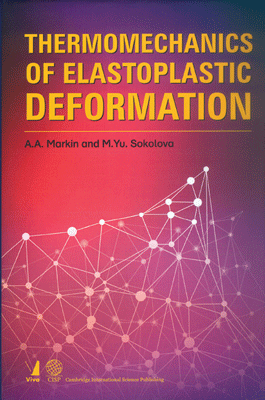Melt-Quenched Nanocrystals
Melt-Quenched Nanocrystals
₹1,705.50 ₹1,895.00 Save: ₹189.50 (10%)
Go to cart-
Out of Stock
ISBN: 9789392299261
Bind: Hardback
Year: 2022
Pages: 370
Size: 6 x 9 Inch
Publisher: Cambridge International Science Publishing
Published in India by: Viva Books
Exclusive Distributors: Viva Books
Sales Territory: India, Nepal, Pakistan, Bangladesh, Sri Lanka
Description:
Melt quenching—the method of quenching from the liquid state—provides new opportunities for producing advanced materials with a unique combination of properties. In the process of melt quenching, attainment of critical cooling rates can produce specific structural states of the material. Nanocrystalline materials produced by melt quenching are classified as nanomaterials not only by their nanoscale structural elements but also by the effects these elements have on the properties of the material.
The result of 30 years of research, Melt-Quenched Nanocrystals presents a detailed and systematic analysis of the nanostructured state formed in the process of melt quenching and subsequent
thermal and deformation effects. It covers the metallurgical and mechanical properties of nanomaterials, focusing particularly on properties derived from nanocrystals and their agglomeration.The text introduces four different types of nanocrystals that can be produced by melt quenching, each having different structures and properties:
• Type I nanocrystals formed when crystallisation takes place completely during melt quenching
• Type II nanocrystals formed when melt quenching is accompanied by amorphous state formation along with partial or complete crystallisation
• Type Ill nanocrystals formed when melt quenching results in the formation of the amorphous state, and nanocrystals can be produced as a result of the subsequent thermal effect
• Type IV nanocrystals formed when melt quenching leads to the formation of the amorphous state, and nanocrystals can be produced as a result of the subsequent deformation effect
The possible uses for these materials are extensive, with applications from coatings to biological compatibility. The final section of the book presents a discussion of existing and future applications of nanocrystals produced by different meltquenching methods.
Target Audience:
Useful for people interested in materials science and metallurgical engineering.
Contents:
Preface • Introduction • General classification of nanostructured states • Melt quenching • Classification of melt-quenched nanocrystals • References
Chapter 1. Melt-quenched nanocrystals (type I nanocrystals) • Main special features of the structure and properties • Sendast alloy (Fe–Si–Al) • Fe–Si alloys • Fe–Al alloys • Fe–Ni alloys • Fe–Co alloys • Ni–Fe–Nb alloys • Fe–Cr–Al alloys 1 • Ni3(Mn, V) alloys • Fe–C–Si alloys • References
Chapter 2. Nanocrystals produced by melt quenching at rates close to critical (type II nanocrystals) • References
Chapter 3. Nanocrystals produced by controlled annealing of the amorphous state (type III nanocrystals) • The amorphous state of the solid and its genetic relationship with nanocrystals • Amorphous metallic alloys • Criteria of transition from the amorphous to nanocrystalline state • Main relationships of crystallisation • Crystallisation thermodynamics • Crystallisation mechanisms • Crystallisation kinetics • Crystallisation stages • The size of crystallisation products • Surface crystallisation • Structure of nanocrystals • Special features of nanocrystallisation in Finemet alloys • Special features of nanocrystallisation in Ni–Ti–Cu alloys • Martensitic transformation in nanocrystals • The dimensional effect for martensitic transformations • Martensitic transformation in nanocrystals, separated by the amorphous phase • Martensitic transformation in single-phase nanocrystals • Mechanical properties • Variation of the mechanical properties in transition from the amorphous to nanocrystalline state • Dependence of microhardness and yield strength on nanograin size • Structural mechanism and kinetics of grain boundary microsliding (GBMS) • Structural classification of nanocrystals from the position of their deformation behaviour • Features of the mechanical behaviour of amorphous– nanocrystalline alloys (ANA) • The magnetic properties • Theory of magnetism in nanocrystals with strong intergrain interaction • Magnetic properties of ‘Finemet’ alloys • Magnetic properties of Nanoperm and Thermoperm alloys • The shape memory effect • References
Chapter 4. Nanocrystals produced by megaplastic deformation of the amorphous state (type IV nanocrystals) • The nature of large (megaplastic) strains • Terminology • What is known about megaplastic deformation • Energy principles of the mechanical effect on solids • Low-temperature dynamic recrystallisation • The principle of cyclicity in megaplastic deformation • The phenomenon of nanocrystallisation in amorphous alloys, subjected to megaplastic deformation • Amorphous alloys of the metal–metalloid type • Ti–Ni–Cu amorphous alloys • References
Chapter 5. Application of melt-quenched nanomaterials • References
Index







